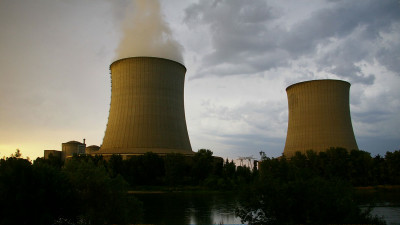Research shows that only 5% of power plants emit '73% of carbon dioxide emissions in the electricity sector'

Coal-fired power plants emit a lot of carbon dioxide, so there is an urgent need to switch to power generation using renewable energy to cope with climate change. A new study analyzing carbon dioxide emissions from nearly 30,000 power plants in 221 countries around the world found that 'only 5% of fossil-fueled power plants emit about 73% of their carbon dioxide emissions. It became clear that there is.
Reducing CO2 emissions by targeting the world's hyper-polluting power plants --IOPscience
5% of Earth's Power Plants Create 73% of the Energy Sector's Emissions
https://www.vice.com/en/article/dyv5mm/5-of-earths-power-plants-create-73-of-the-energy-sectors-emissions
Top 5% Polluting Power Plants Account For 73% Of Global Emissions | OilPrice.com
https://oilprice.com/Latest-Energy-News/World-News/Top-5-Polluting-Power-Plants-Account-For-73-Of-Global-Emissions.html
Most of the power sector's emissions come from a small minority of plants | Ars Technica
https://arstechnica.com/science/2021/08/most-of-the-power-sectors-emissions-come-from-a-small-minority-of-plants/
Many people recognize that 'power plants that use renewable energy are good for the environment, and power plants that use fossil fuels are bad for the environment,' and in fact this phrase is correct to some extent. However, even power plants that use the same fossil fuel have various power generation efficiencies, and some power plants operate only during periods of high demand and do not operate at other times. The reality of carbon dioxide emissions is complex.
So a research team led by Don Grant , a professor of sociology at the University of Colorado at Boulder, created a 'carbon dioxide emission profile' for 29,078 fossil fuel power plants in 221 countries. .. This task was easy in some countries that disclosed detailed data on carbon dioxide emissions by power plant, but in many countries there was no detailed data, so data from the International Energy Agency (IEA) . Emissions were estimated from the engineering specifications of individual plants.

As a result of the analysis, the 10 worst power plants with the highest carbon dioxide emissions were all coal-fired power plants, all of which were 'inefficient' with high carbon dioxide emissions relative to the amount of energy produced. The 10 worst power plants are in Poland, India, South Korea, Taiwan, China, Germany and Japan, and the one with the highest carbon dioxide emissions in the world was the
There are many worst 10 power plants in Asia, with 3 from South Korea and 2 from India ranked among the 10 worst in the world. In addition, the Hekinan Thermal Power Station in Hekinan City, Aichi Prefecture was ranked in from Japan, and the ranking was the worst 10th.
Surprisingly, only one power plant was ranked in from China, where coal-fired power generation is thriving, but this is because many of China's coal-fired power plants were built together during the period of industrialization, so power generation efficiency. In that respect, it is believed that the reason is that there is little variation. On the other hand, in countries such as Germany, Indonesia, Russia, and the United States, construction times are different, and some coal-fired power plants are surprisingly inefficient.
According to the research team, the worst 10 coal-fired power plants were actually 28.2% to 75.6% or more inefficient in power generation compared to the carbon dioxide emissions of their own coal-fired power plants. In addition, 'the most inefficient 5% of power plants in the country' accounts for about 25% of the country's carbon dioxide emissions related to power generation in China, about 75% in the United States and South Korea, and in Australia, Germany and Japan. That's about 90%.
The study also found that 73% of the world's carbon dioxide emissions from electricity generation are emitted by the 'most inefficient 5% of the worst power plants.' These 5% power plants emit 14 times more carbon dioxide than the average power plant. “Why these inefficient power plants are used so often is a topic left for future research,” said the research team.

If the worst 5% coal-fired power plants, which are the most inefficient, are all replaced by power plants that use renewable energy, the electricity sector's carbon dioxide emissions will be reduced by 73%. Even if it does not change so rapidly, if the power generation efficiency can be raised to the national average level, carbon dioxide emissions in the electricity sector will be reduced by 25 to 35% in Australia and Germany. In addition, it is possible to reduce carbon dioxide emissions by 40% or more in many countries including the United States by replacing fossil fuels with natural gas.
Especially effective is the introduction of 'Carbon dioxide Capture and Storage (CCS) ', a system that separates carbon dioxide emitted from power plants from other gases, collects it, and stores it deep underground. The researchers estimate that incorporating CCS with a recovery efficiency of 85% into the worst 5% coal-fired power plant would reduce carbon dioxide emissions in the power sector by 48.9%.
'One of the challenges faced by climate activists is to find out exactly who is responsible for the climate crisis,' Grant told VICE, a foreign media outlet. Insisted that.
Related Posts:
in Science, Posted by log1h_ik







